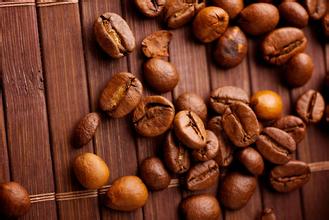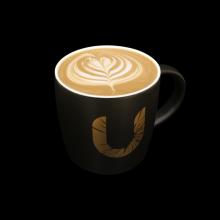How different do Chinese, American, Japanese and British people drink coffee?
Although the market share of freshly ground coffee is only 2%, it has grown rapidly in China in recent years, with an average of more than 20%. This is also the future opportunity for Starbucks, Costa and other coffee shop chains in China.
According to London-based Coffee International, coffee consumption in China has grown at an annual rate of 15%, compared with a global average of 2%.
Among them, the rapid growth of bottled ready-to-drink coffee is due to "convenience" and more and more kinds of convenience store shelves, including Nestl é, Yaha, Maxwell, Benazon and so on. Bullish on the future growth of this market, Starbucks launched a high-profile Christmas special drink a month ago, which is sold in e-commerce, boutique supermarkets and convenience stores, and announced the establishment of a ready-to-drink product line, which was previously imported from the United States to be made in China.
Nestl é, as the big brother in this market, has more than 50% of the bottled ready-to-drink market, and the best sellers are mocha and lattes (extra strong, fragrant and slippery). It also released a new product called Xue Camus in the middle of the year, which is divided into two flavors: "cappuccino" and "Italian flavor".
With bottled Frappuccino, Starbucks has an absolute advantage in the American ready-to-drink coffee market. Bottled cold coffee is also very popular this summer.
However, the status of ground coffee in the United States is still unshakable, accounting for 91% of the entire coffee market. From the western cowboy frying coffee beans in a pan in the past to the introduction of the "boiling pot" invented by the French, American coffee culture has a long history. Americans drink almost 1% of the world's coffee production, making it the largest coffee consumer in the world.
In addition, Starbucks and Donndole have been in the coffee industry for many years. Starbucks has more than 20,000 stores around the world, of which more than 10,000 are in the United States.
But because of the developed convenience stores, you will find that the bottled ready-to-drink coffee market is dominant in Japan. 7-Eleven, Japan's first convenience store, opened in Tokyo more than 40 years ago and now has 19000 stores, compared with more than 60, 000 stores worldwide. Walk into the store, you can find Suntory, Fuyong, Parade, ASEED and other brands of ready-to-drink coffee. Among them, Suntory has always been the "boss" of ready-to-drink coffee, with a market share of more than 20% for five or six consecutive years.
In Britain, which has a strong tea culture, the coffee market presents a more interesting situation: instant coffee is the most popular (67.3%). This may have something to do with the habit of making tea bags. BBC has previously reported that market research shows that because most Britons do not know how to make and mix their own coffee, the average person spends 15600 pounds (156000 yuan) in a coffee shop over a lifetime. So freshly ground coffee ranks second.
The biggest beneficiary is, of course, the local coffee brand Costa, which has more than 2000 stores in the UK. 103 new stores were opened in the UK in 2015, making it the most popular coffee chain in the UK for six years in a row. Bottled coffee is the least popular here.

Important Notice :
前街咖啡 FrontStreet Coffee has moved to new addredd:
FrontStreet Coffee Address: 315,Donghua East Road,GuangZhou
Tel:020 38364473
- Prev

The part of Italian coffee that needs to be cleaned frequently
The part of espresso coffee that needs to be cleaned frequently is introduced. The cleaning of coffee residues flowing out of the brewing head can separate the water filter network and the water separation copper block on the brewing head. The water filter network is the part that directly contacts the coffee powder every time the coffee is brewed. Because the coffee powder is compressed, the coffee liquid will flow out of the powder bowl only when it is pressed to a certain extent, so before the coffee oozes out,
- Next

Latte without coffee to know these farewell coffee "rookies"
In fact, the measure of coffee quality is not that the more charred, the bitter, the better. It is important to know that in order to save costs, many cafes have bought a lot of cheap and shoddy beans and can only roast the coffee into charred bitterness through deep roasting in an attempt to cover up its poor quality. High-quality coffee not only has no bitter taste, but also has rich flavors and layers such as fruit and chocolate. Maybe you're really used to burnt again.
Related
- Beginners will see the "Coffee pull flower" guide!
- What is the difference between ice blog purified milk and ordinary milk coffee?
- Why is the Philippines the largest producer of crops in Liberia?
- For coffee extraction, should the fine powder be retained?
- How does extracted espresso fill pressed powder? How much strength does it take to press the powder?
- How to make jasmine cold extract coffee? Is the jasmine + latte good?
- Will this little toy really make the coffee taste better? How does Lily Drip affect coffee extraction?
- Will the action of slapping the filter cup also affect coffee extraction?
- What's the difference between powder-to-water ratio and powder-to-liquid ratio?
- What is the Ethiopian local species? What does it have to do with Heirloom native species?

